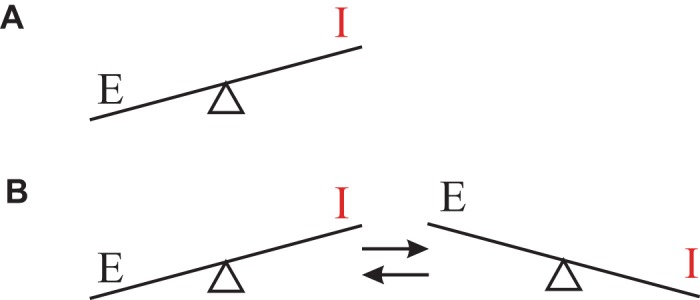Fig. 1.

Simplified representation of 2 (seemingly contradictory) roles of excitatory (E) and inhibitory (I) activity ascribed to clinical seizure activity (e.g., Fisher et al. 2005). A: hyperexcitation is a disturbed balance in favor of excitation. B: hypersynchronous oscillation that is often characteristic for clinical recording of ongoing seizures requires back and forth switches between dominant excitation and inhibition.
